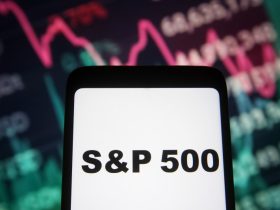By Stella Qiu
SYDNEY (Reuters) – Asian shares plumbed 11-month lows on Friday as a relentless rise in long-term U.S. yields pressured valuations and investors shied away from risk due to mounting fears that Israel’s war on Hamas could spark a wider Middle East conflict.
Those fears also drove oil prices higher.
Europe wass set for a similarly downbeat open, with EUROSTOXX 50 futures sliding 0.6% and off 0.4%. slipped 0.1% while Nasdaq futures were down 0.3%.
The surge in the 10-year U.S. benchmark yield overnight to briefly touch 5% has raised borrowing costs around the world. On Friday, the Bank of Japan intervened in the Japanese government bond (JGB) market as the 10-year JGB yield touched a decade high.
Markets reacted choppily to a much-watched speech from Federal Reserve Chair Jerome Powell overnight, although most investors leaned further into bets that the Fed will extend its rate pause in November.
Helped a little by a pullback in Treasury yields away from the critical 5% mark, MSCI’s broadest index of Asia-Pacific shares outside Japan came off an 11-month low to stand just 0.4% lower on the day, leaving it 2.6% down for the week.
Tokyo’s was down 0.2%, also after recovering some ground from early lows.
Data out of Japan showed core inflation in September slowed below the 3% threshold for the first time in over a year.
China’s blue chips fell 0.5%, while Hong Kong’s dropped 0.4%. China on Friday held its benchmark lending rates steady as the economy showed signs of stabilisation.
Sentiment was also fragile after Tesla (NASDAQ:) shares dropped 9% after the electric vehicle maker’s quarterly results disappointed, with a warning about consumer demand from Elon Musk sparking a sell off in EV stocks.
Powell appeared to align himself with Fed colleagues who have recently said the bond market is now doing some of the central bank’s work for it.
Walking a narrow line in his comments, Powell left open the possible need for more rate hikes because the economy had proved stronger than expected, but also noting emerging risks and a need to move with care.
The U.S. dollar was within a hair’s breadth of the closely watched 150 yen level at 149.84 yen. It was up 0.1% against its peers at 106.34, not too far from an 11-month top of 107.34 hit in early this month.
The 10-year’s yield eased 4 basis points to 4.9456%, after briefly touching 5.0% overnight for the first since 2007. They have surged as investors grappled with U.S. economic resilience, concerns about the increase in U.S. debt issuance, and interest rates remaining high for longer.
Quincy Krosby, chief global strategist at LPL Financial (NASDAQ:), said the focus on supply has become a fixation for the treasury market, and the concern is that the U.S. deficit is poised to climb higher because of the larger defence funding needs for Washington.
“Now we’re talking about not just the Ukraine-Russia conflict, that front, but now you have another front, that’s in the Middle East that has to be satisfied… The U.S. is going to need more and more supply in terms of what we auction to pay for all of this.”
On the geopolitical front, fears of a spreading regional conflict were rising. U.S. President Joe Biden on Thursday asked Americans to spend billions more dollars to help Israel fight Hamas, with mounting expectations that Israeli forces will mount a ground invasion of Gaza imminently.
A U.S. Navy warship intercepted three cruise missiles and several drones launched by the Iran-aligned Houthi movement from Yemen potentially toward Israel. U.S. base in Iraq came under attacke after Iraqi militants warned Washington against intervening to support Israel.
“There are several reasons why investors would want to sell this market, while very few to buy. That’s what we’ve seen today as risk sells off,” said Kyle Rodda, senior financial market analyst at capital.com.
“To put it in simplest terms, market participants don’t want to be carrying risk into the weekend when hostilities could erupt.”
Gold prices scaled a fresh two-month peak of $1,982.09 per ounce, the highest since late July, as investors sought safe-haven assets in the turmoil.
Oil prices were headed for the second weekly gain, due to fears of an escalating regional conflict in the Middle East, which would disrupt supplies.
jumped 1.2% to $90.42 per barrel and was at $93.25, up 0.9% on the day.
Read the full article here











Leave a Reply